Northern Mockingbirds have three known courtship displays. I was able to photograph one of them, called the “flight display”, three days ago on Antelope Island.
1/3200, f/7.1, ISO 500, Canon 7D, Canon EF500mm f/4L IS II USM +1.4 tc, not baited, set up or called in
The flight display occurs while the bird is on a high singing perch and this male (based on his behavior) was singing his heart out. Mockingbirds are highly skilled mimics and while I watched this bird it mimicked the calls of at least a half-dozen other species.
1/3200, f/7.1, ISO 500, Canon 7D, Canon EF500mm f/4L IS II USM +1.4 tc, not baited, set up or called in
As part of the display it repeatedly jumped up a few feet above the perch by flapping its wings a couple of times and then parachuted down with its wings open onto the same perch (or occasionally a perch very close). I was disappointed that it always did this facing away from me, perhaps because of the direction of the breeze. The white wing patches were conspicuous and the bird sang continuously during the display, even in the air.
1/3200, f/7.1, ISO 500, Canon 7D, Canon EF500mm f/4L IS II USM, not baited, set up or called in
Here he is parachuting down to the perch again. Even though he was facing away the shot shows the white wing patches and tail retrices well.
1/3200, f/7.1, ISO 500, Canon 7D, Canon EF500mm f/4L IS II USM, not baited, set up or called in
I probably watched him launch from the bush and parachute back down to it a dozen times or more but getting the shots wasn’t easy. I didn’t notice the female he was apparently courting in the vicinity but she must have been nearby.
1/5000, f/7.1, ISO 500, Canon 7D, Canon EF500mm f/4L IS II USM + 1.4 tc, not baited, set up or called in
This same bird also performed another display called the “wing flash” where the wings are raised partly to fully open and the conspicuous white wing patches are exposed. This display is usually performed on the ground and the function of the behavior isn’t fully understood.
These birds were once headed for extinction due to the caged-bird trade in the 1700s but their range is now expanding. I know that many of you see mockingbirds every day but they’re not common in much of Utah and I was thrilled to see and photograph these behaviors up close.
Ron


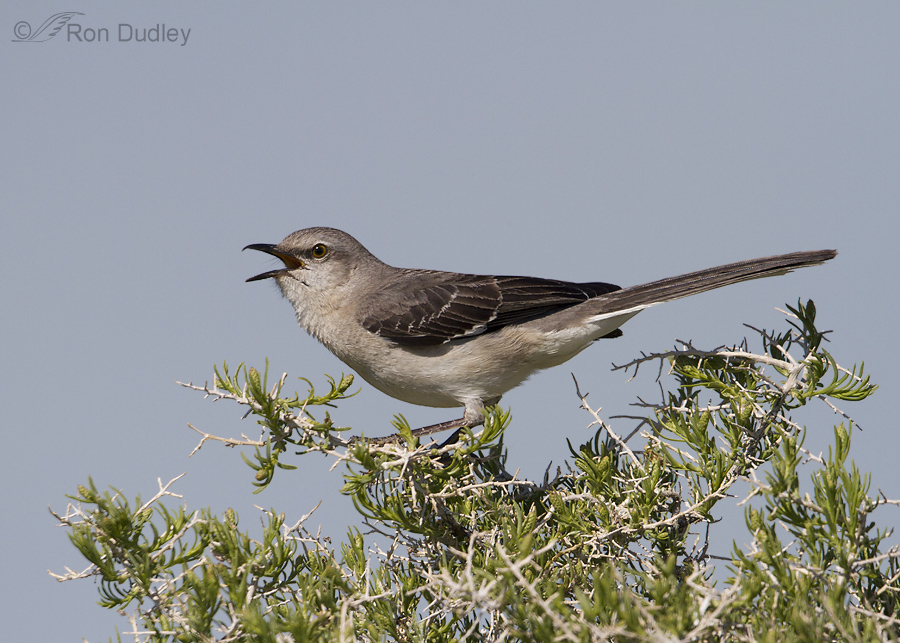
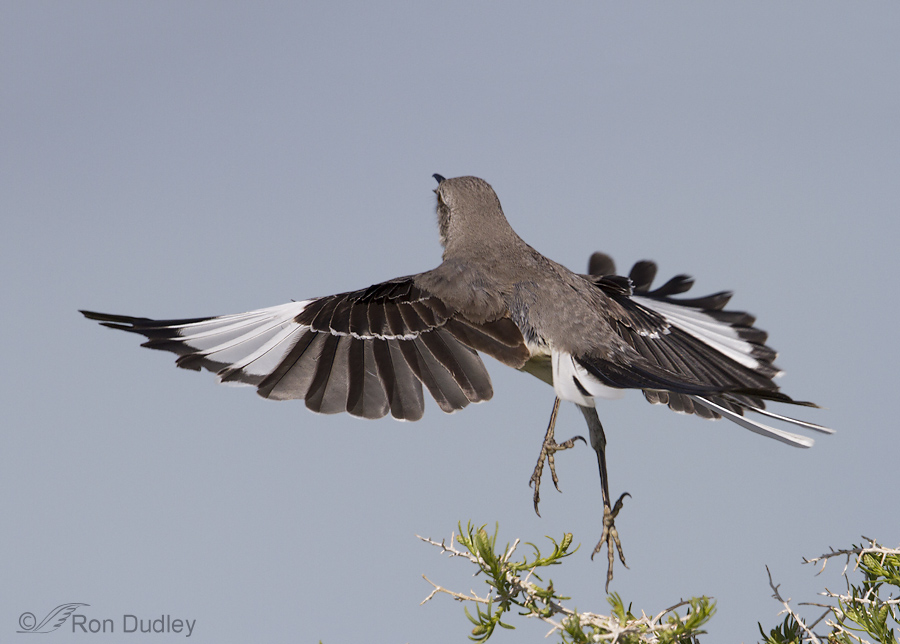
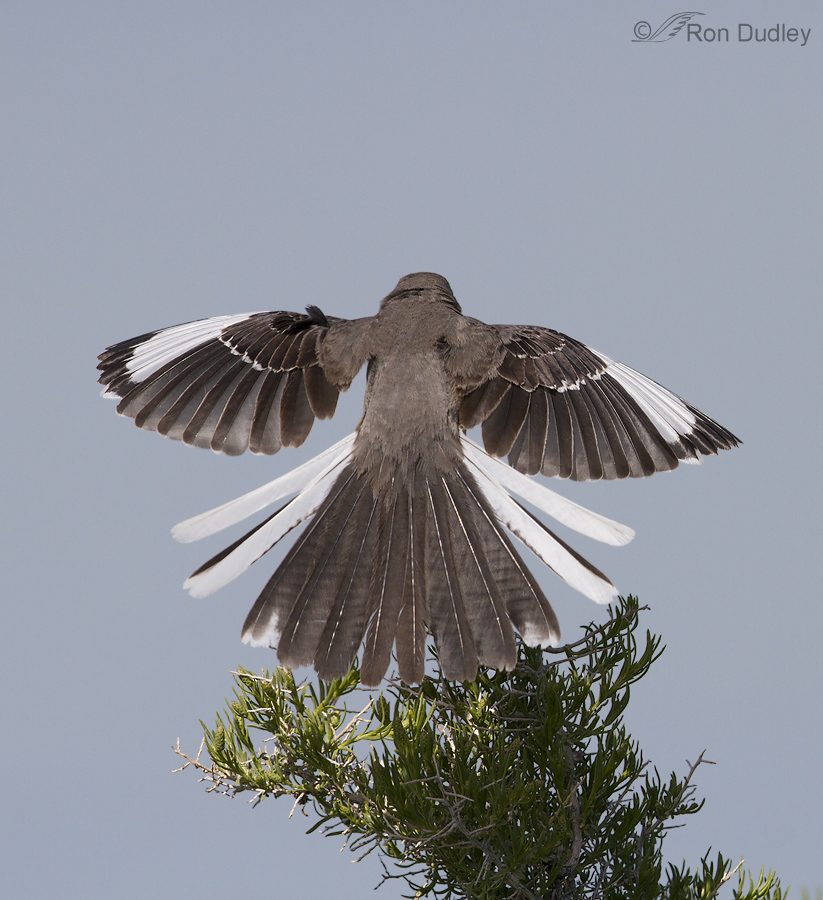
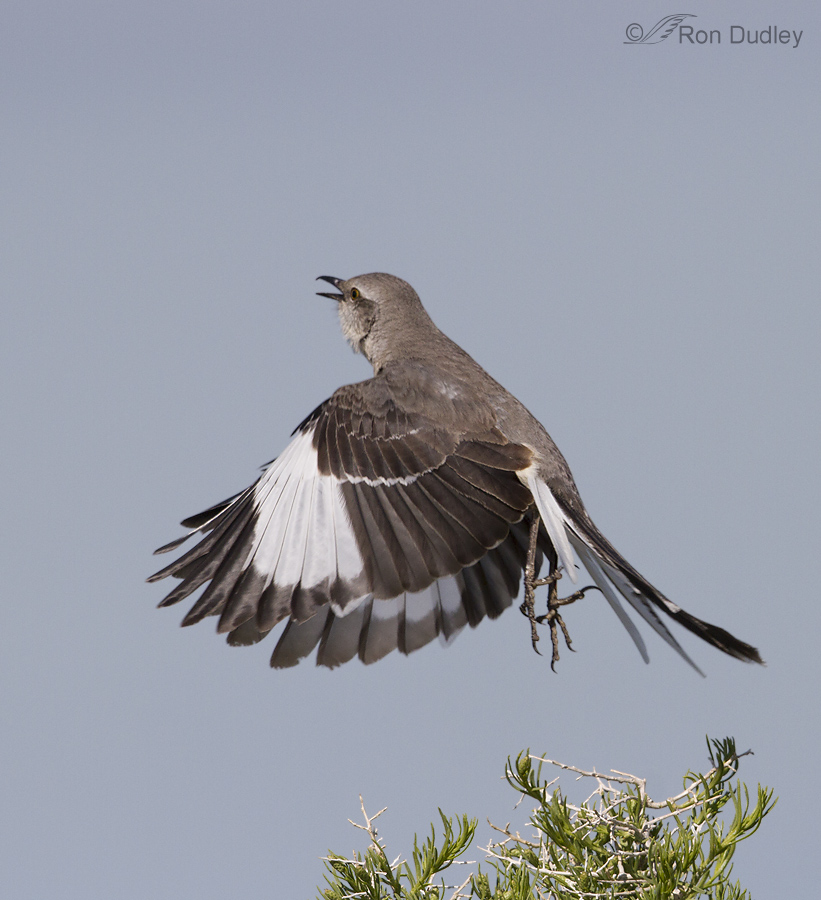
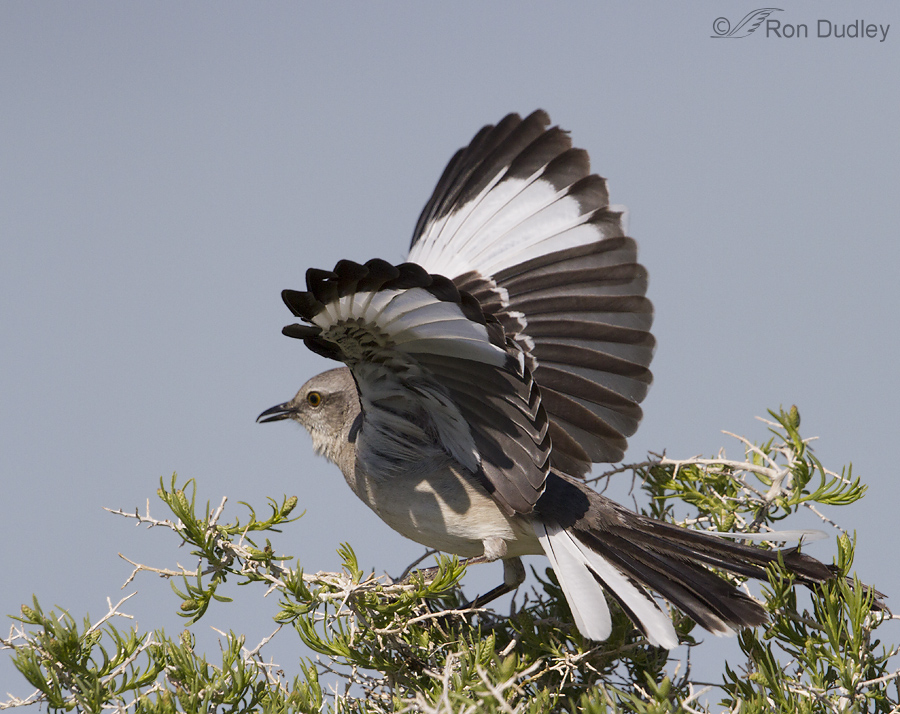
Mockingbirds are one of the few birds that is really common in El Paso. And I had many experiences with them in Southern California when I was growing up. Despite the fact that I consider them to be a common bird, their song and their behavior are always interesting. I really enjoyed seeing these shots.
very nice shots Ron….
http://www.serkanmutan.com
I too have several pairs of mocks in my backyard, (probably because I throw superworms to them during nesting season and they know a good thing). I’ve watched both of the behaviors you mention, (and show) Ron…but I’ve never seen them in such a beautiful and intimate way.
Thank you.
Thanks so much for the great info ! I have a pair of Mockingbirds in my yard this year. I watch bird behavior all the time, but have never seen the displays you mentioned. I’ll have to keep a closer watch. Mockingbirds began moving into upstate New York about 20 years ago. I still consider them a treat to see and photograph. What was interesting about them this winter was their aggression in protecting their food sources in my yard. He wouldn’t let other birds in the crabapple tree. While he still comes for crab apples , he isn’t driving off other birds any longer.
Thanks Ron. That second shot is stunning! And this explains what I’ve seen while visiting a small island in the Bahamas. I’ve watched a mockingbird do this display for what felt like hours, from his perch at the top of a utility/telephone pole visible from my window. Lovely to learn about the daily activities of birds, which I truly appreciate your sharing.
What incredible choreography. And an incredible scene for you to see played and replayed. With a sound track too. Ooooh.
Simply wonderful photographs, Ron, of another one of those “common and overlooked” birds! Love the detailed plumage.
My understanding is that the wing (and tail) “flash” serves to scare insects from hiding places. This is pretty common with American Redstarts and a few other species. Last week, I saw an unusual (for me) group of 8 Northern Mockingbirds foraging in a grassy area. They don’t usually play well together!
Thank you so much for another beautiful and informative post!
Thanks very much, Wally. I’d heard the same thing about the function of the wing flash but here’s what BNA has to say about it:
“Function of this behavior (wing flash) is unknown; speculations include startling insects or potential predators (especially nest predators) and as a component of territorial display.”
Great birds and fun to watch. While I lived in Dallas, TX I many times saw them work in teams of two or three to dive-bomb cats.
“I many times saw them work in teams of two or three to dive-bomb cats.”
Sounds like they’re taking lessons from Magpies, Ed.
Ron, he was probably showing himself to the female so we got this wonderful back photo. Thanks.
I think you’re likely correct, Diana.
somehow, the second and fourth shots seem to say, WHEEEE!!!” And to express the very joy of flying….
This is bird ballet at its best!!!
I had the same thought when I was watching it happen, Patty.
Love these shots. And finally a bird that shows up in my yard on occasion. Although, I only have photos of the bird sitting on a branch. Pretty bird. Great photos as always Ron.
Nothing wrong with photos of a bird “sitting on a branch, Ellen”. Beats the heck out of it sitting on an ugly perch like a power line or even on a bird feeder. Thank you.
Sensational stunning shots Ron, thanks for sharing!
Thank you, Charlotte.
Great images and very informative. We do get many of these in Maryland and they tend to be aggressive.
I like image # 3 to show the feather detail. Thanks!
Bill, I’ve heard about their aggressiveness but personally I’ve never seen it directed at anything except other birds.
Wonderful moments to catch! I’m so pleased to see these wonderful details of mockingbirds, which were a favorite bird of mine when I was a child in Maryland. Thanks, Ron.
They’re fast becoming a favorite of mine too, Alison.